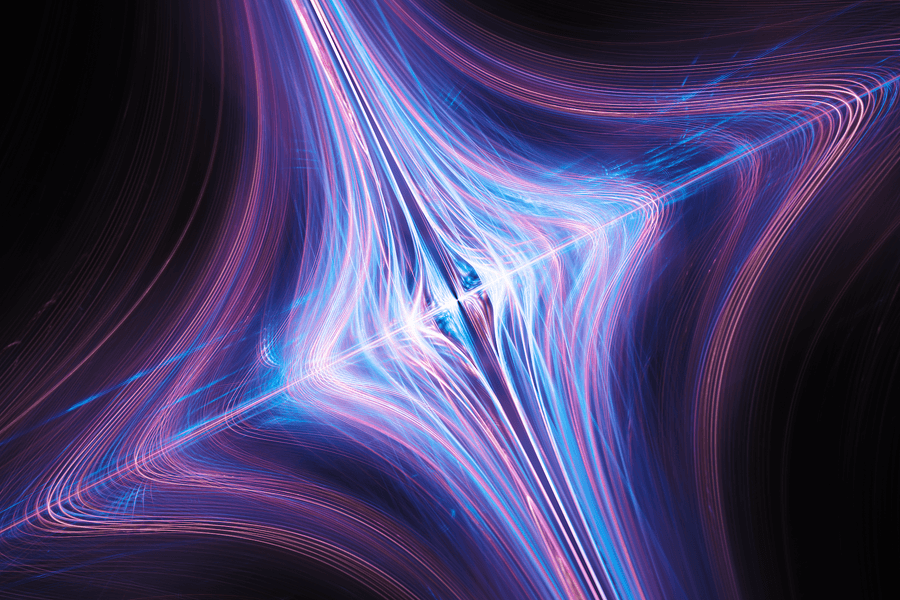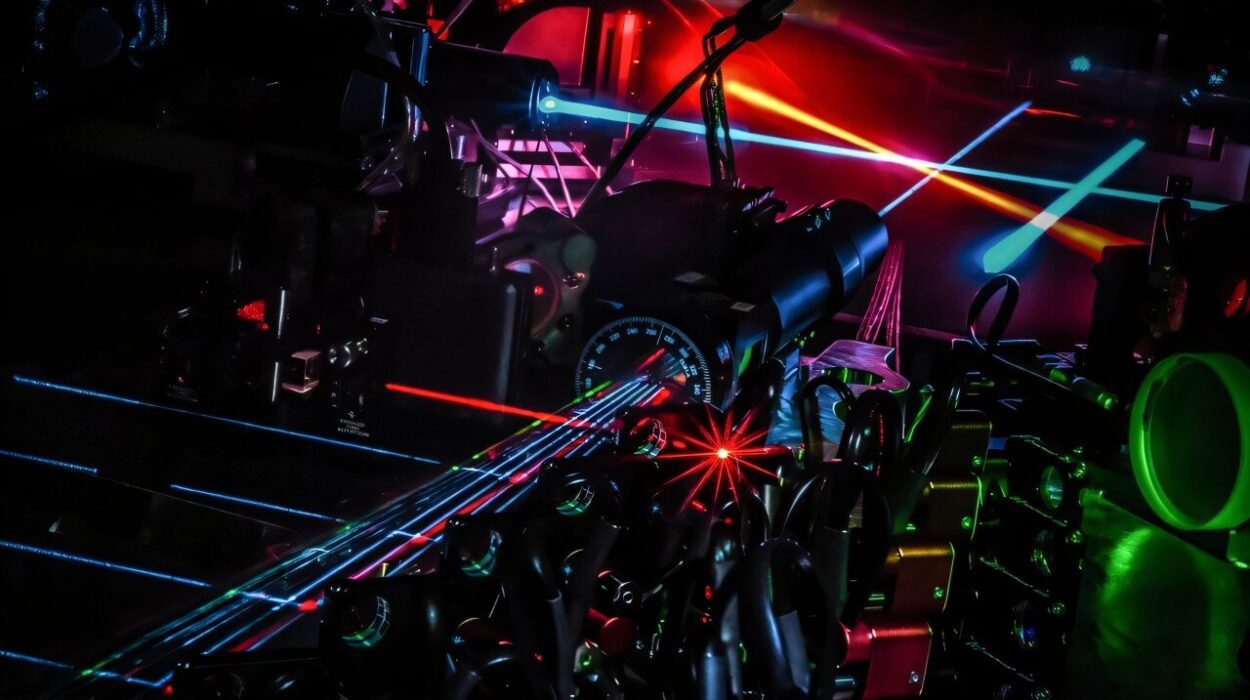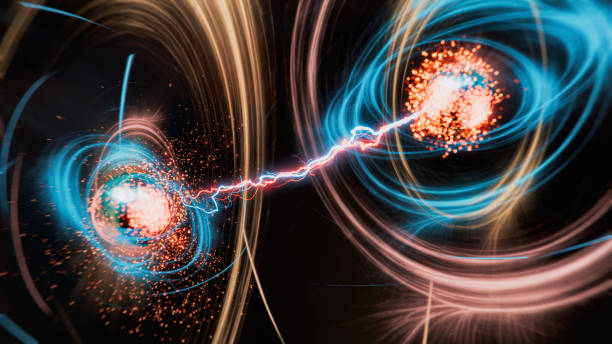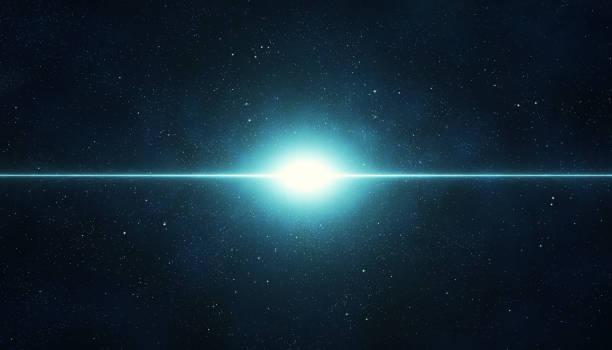When you look up at the night sky, perhaps you see stars. Maybe you imagine galaxies or the silence between the stars, a kind of cosmic canvas. But what if I told you that beneath that vast and tranquil ceiling, reality itself is not what it seems? That underneath the ordinary world of apples falling from trees and planets orbiting stars, there lies a hidden structure—one so peculiar, so counterintuitive, that it defies our most basic instincts?
Welcome to quantum physics, the strange, pulsating heart of the universe.
Here, particles can be in two places at once. They can tunnel through walls, influence each other across cosmic distances, and appear from nothing. Time may not move the way you think it does. Causality—this-happens-then-that-happens—might break down. Measurement itself, the act of observing, may change the very thing you’re observing.
It sounds like madness. But it’s not. It’s physics.
Quantum mechanics, as it’s formally called, is not just a chapter in science. It’s the rewriting of the entire book. It is the most successful theory in the history of physics, explaining everything from the colors in a butterfly’s wings to the reason the sun shines. But it’s also an open door into mystery, paradox, and awe.
Let us walk through that door.
The Collapse of Certainty
The story of quantum physics begins not with particles or equations, but with doubt—with a fracture in the old way of understanding the world. For centuries, Newtonian physics reigned supreme. The universe was a mechanical system, predictable and elegant. Apples fell, planets orbited, and everything followed laws as rigid as the gears in a clock.
But cracks began to appear at the dawn of the 20th century. Scientists noticed that light, which was once thought to be a wave, sometimes behaved like a particle. And particles, which were supposed to be solid little objects, sometimes acted like waves.
It began with blackbody radiation, a strange phenomenon that classical physics simply could not explain. When scientists tried to calculate how much energy a hot object should emit, their math exploded into infinity—a failure so total it was called the “ultraviolet catastrophe.”
It took a quiet genius named Max Planck to step into the abyss and propose something radical: maybe energy doesn’t flow continuously like water from a tap. Maybe it comes in little packets—quanta. Discrete, indivisible chunks.
Planck didn’t know it, but he had just broken open reality.
Light That Comes in Packets
A few years later, Albert Einstein took Planck’s idea and ran with it. He was trying to explain the photoelectric effect—a curious experiment where light hitting a metal surface ejects electrons. But classical physics again failed. Only when Einstein treated light as a stream of particles—photons—did the math work.
This was revolutionary. Light, the most wavelike thing in the universe, could behave like particles. The duality of light—both wave and particle—was born. And with it, a crack spread through the mirror of certainty.
It wasn’t just light. Soon electrons, atoms, even entire molecules were seen to exhibit the same strange behavior. They were both waves and particles, depending on how you looked.
Quantum physics was no longer a theory about light. It was a theory about everything.
The Ghost in the Equation
One of the towering achievements of early quantum theory came from an unlikely source: a shy Austrian physicist named Erwin Schrödinger. Disturbed by the idea that particles didn’t have definite properties until measured, he sought a new way to describe quantum behavior—not through rigid laws but through waves.
The result was the Schrödinger Equation—a beautiful, undulating description of how quantum systems evolve over time. But this equation didn’t describe where particles were. Instead, it described probabilities. It told you the chance of finding a particle here or there, but not where it actually was.
Reality, according to this new language, wasn’t definite. It was potential.
A particle didn’t have a position until you looked. It lived in a fuzzy cloud of possibility. Only when you measured it did the wavefunction “collapse,” turning maybe into is.
This is the heart of quantum weirdness: that until we observe it, the universe exists as a shimmering fog of potential.
Schrödinger’s Cat: Death, Life, and Superposition
To illustrate this eerie truth, Schrödinger offered a thought experiment—now infamous. Imagine a cat sealed in a box with a radioactive atom. If the atom decays, it triggers poison that kills the cat. If it doesn’t, the cat lives.
According to quantum rules, until we open the box and observe, the atom is in a superposition of decayed and not decayed. That means the cat is both alive and dead—a ghostly blend of life and death.
This isn’t just metaphor. Quantum superposition is real. Electrons can spin up and down at once. Particles can be in multiple places. The world only chooses a path when observed.
But what does “observation” mean? Is it consciousness? Is it interaction with another particle? The answers are still debated.
The cat, it seems, remains both alive and dead—not just in fiction, but in physics.
Entanglement: The Phantom Link Between Particles
If quantum physics is a dream, then entanglement is its most poetic twist.
When two particles interact and become entangled, their fates are tied. No matter how far apart they are, measuring one instantaneously affects the other. If you measure one and find it spinning up, the other—no matter how distant—must be spinning down.
Einstein hated this. He called it “spooky action at a distance” and believed it revealed something incomplete in quantum theory. Surely information couldn’t travel faster than light!
But experiments have confirmed entanglement again and again. It’s not just real—it’s central. The universe, at a deep level, is interconnected in ways we don’t yet understand.
Entanglement underlies quantum computing, encryption, and perhaps the very fabric of spacetime. It suggests a cosmos where separation is illusion, where everything may be part of one grand quantum dance.
The Observer and the Veil
Quantum physics doesn’t just challenge what we know—it challenges how we know. If reality changes when we observe it, then what is the role of the observer?
This question has haunted physicists and philosophers alike. Some interpret quantum theory as saying that consciousness collapses the wavefunction. Others argue that any interaction with a system counts as observation—no mind required.
And then there’s the radical Many Worlds Interpretation. Instead of the wavefunction collapsing, it suggests that every possibility branches into a new universe. When you observe the cat, in one world it lives, in another it dies. Infinite realities, side by side.
These aren’t just abstract ideas. They are attempts to understand the deepest truth of nature. And no one fully agrees on which is right.
Quantum mechanics works. Its predictions are stunningly accurate. But its meaning remains veiled, like a poem with a thousand interpretations.
Quantum Tunneling and the Music of the Void
Perhaps the strangest implication of quantum physics is tunneling—the ability of particles to pass through barriers they seemingly have no energy to cross.
It’s like a ball sitting in a valley, unable to climb a hill—yet occasionally, it appears on the other side. Not because it rolled over, but because it tunneled through.
Quantum tunneling is not just a trick. It powers the nuclear fusion in the sun. It enables scanning tunneling microscopes, which let us see individual atoms. It suggests that the universe itself may have tunneled into being from “nothing.”
And in this idea—that particles emerge from voids, that uncertainty is fundamental—we glimpse something profound. The universe is not a deterministic machine. It is a place of probabilities, fluctuations, and chance.
It is not dead—it is alive with quantum rhythm.
Quantum Fields: Where Particles Are Just Ripples
As quantum theory advanced, physicists began to see particles not as tiny billiard balls, but as excitations in quantum fields. Every type of particle—electron, quark, photon—is a ripple in its corresponding field, stretching across all space.
The vacuum, then, is not empty. It’s a seething sea of fields, constantly bubbling with virtual particles that appear and vanish, borrowing energy from nothing.
Quantum Field Theory (QFT) emerged from this insight, unifying quantum mechanics with special relativity. It gave birth to the Standard Model of particle physics—the most complete description we have of matter and forces.
But even the Standard Model is incomplete. It doesn’t include gravity. It leaves dark matter and dark energy unexplained. And so, the search goes on.
The Future of Quantum: From Computation to Cosmos
Today, quantum physics is no longer confined to chalkboards and equations. It powers lasers, MRIs, GPS, semiconductors, and solar panels. It’s building the future.
Quantum computers, once science fiction, are now real. They harness superposition and entanglement to perform computations that classical computers could never match.
Quantum cryptography promises unbreakable codes. Quantum sensors could revolutionize medicine and navigation. We are beginning to engineer the quantum world, bending its strangeness to our will.
But the greatest frontier may still be in the stars.
Physicists dream of uniting quantum mechanics with Einstein’s general relativity—a “Theory of Everything.” Some believe quantum gravity hides in black holes. Others look to string theory or loop quantum gravity. We are not yet sure.
What we do know is this: the quantum world is not a footnote to reality. It is its foundation.
Mystery at the Core
To learn quantum physics is not just to study equations. It is to feel the ground shift under your feet. It is to realize that certainty is a luxury, and mystery a constant companion.
Richard Feynman, one of its greatest pioneers, once said, “If you think you understand quantum mechanics, you don’t understand quantum mechanics.”
And yet, we try. Not just to calculate, but to understand. To find the story behind the math, the meaning behind the madness.
Because deep down, quantum physics is not just a science. It is a kind of poetry.
A reminder that the universe is not merely something we live in—it is something that dreams.






